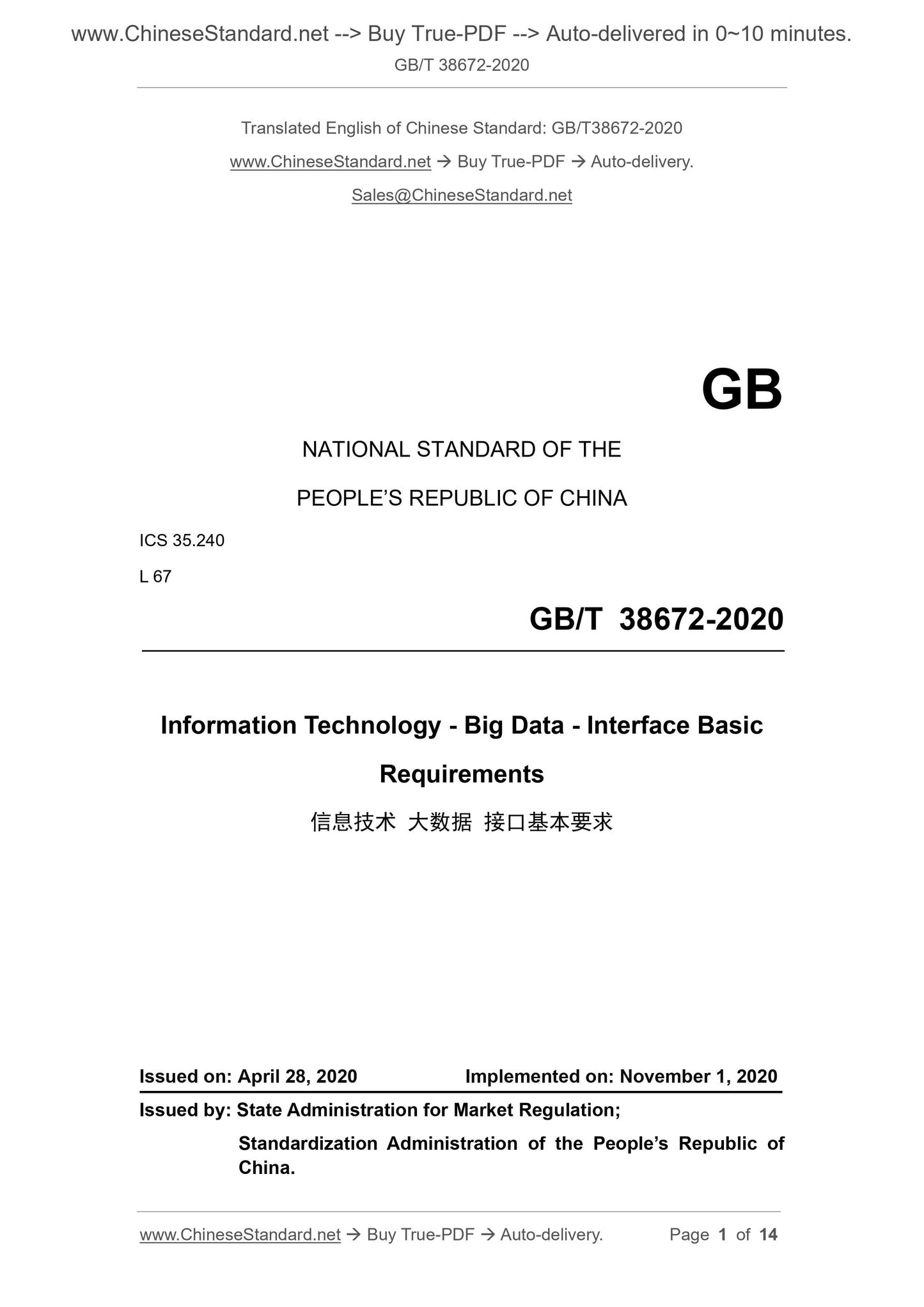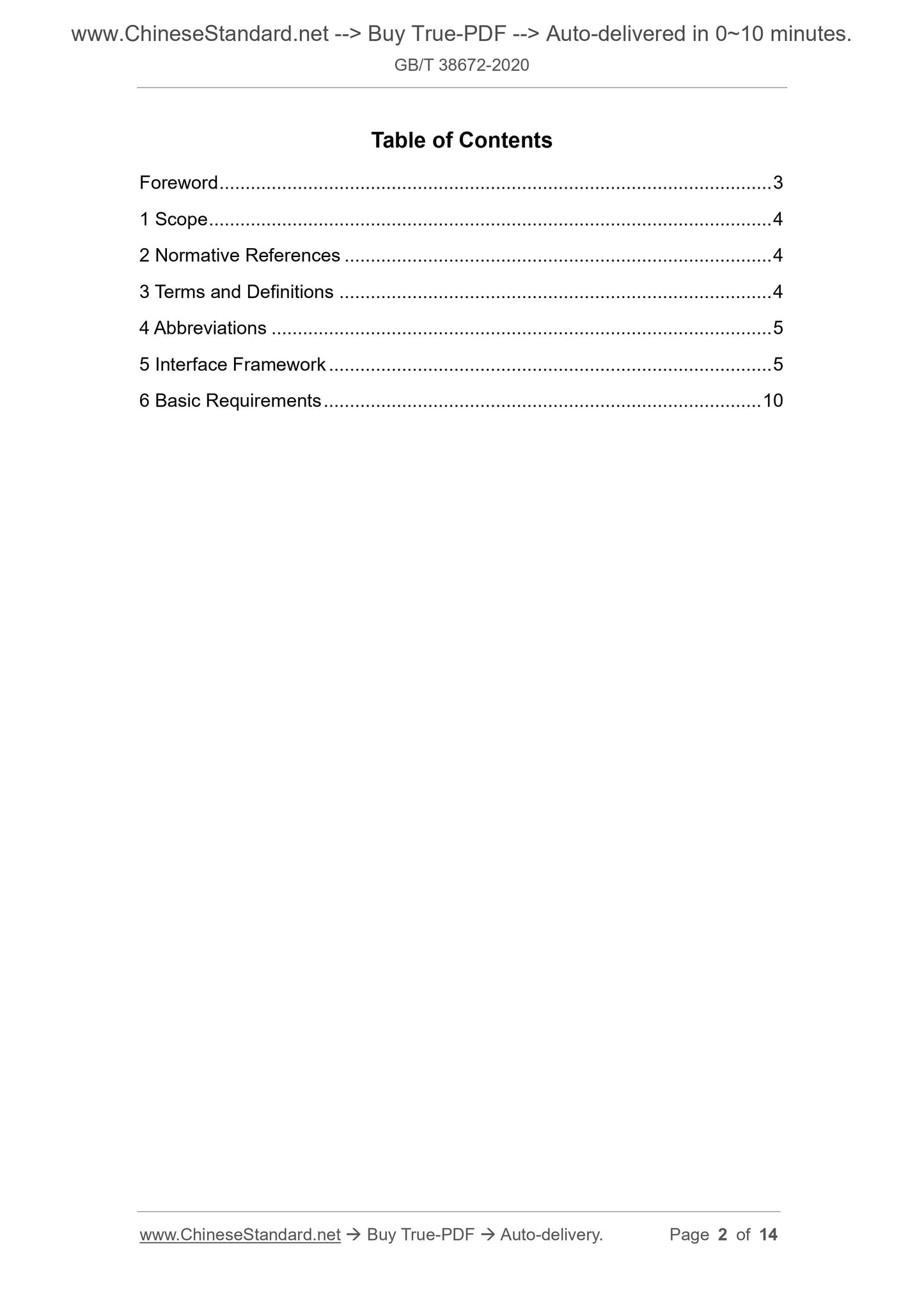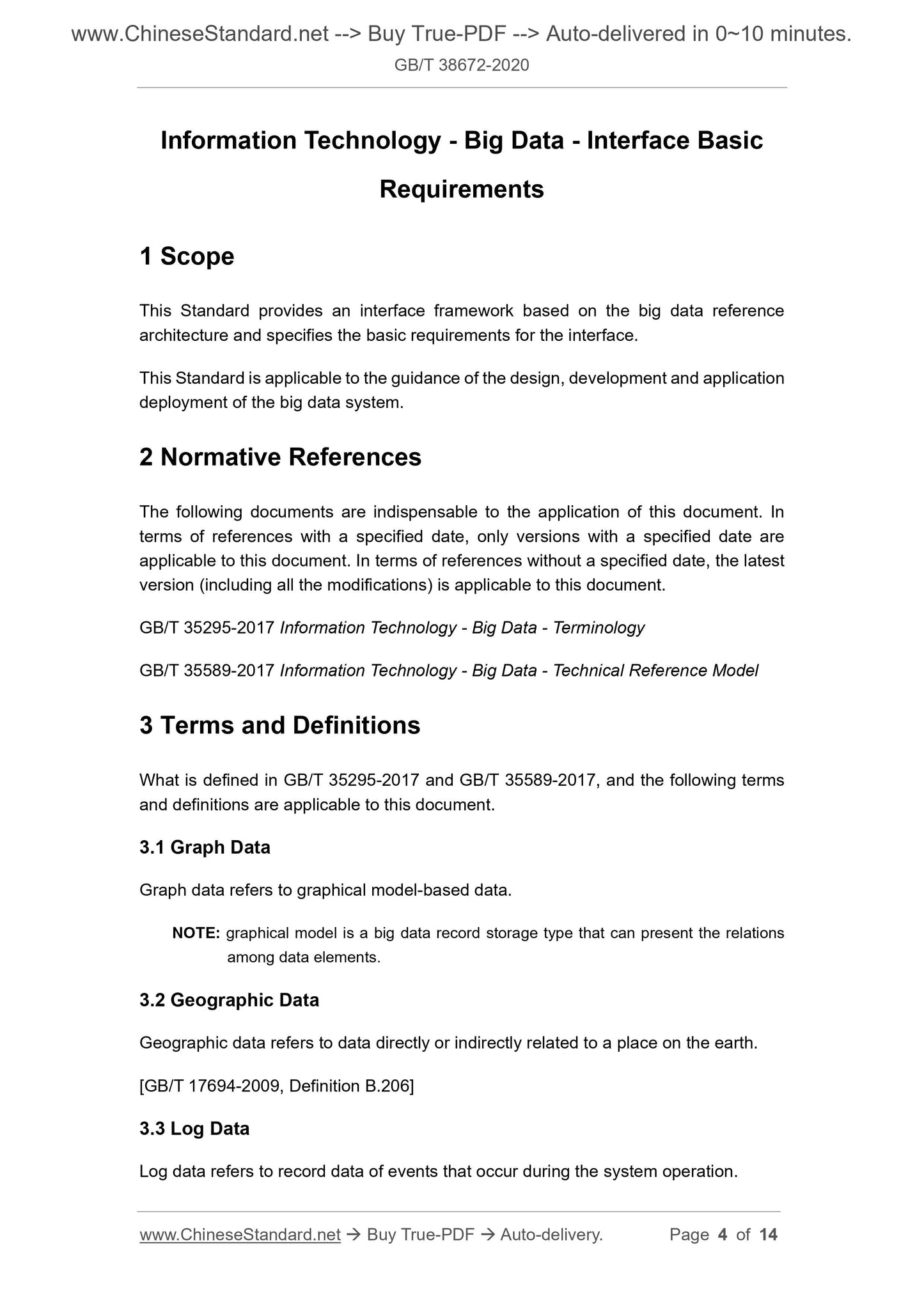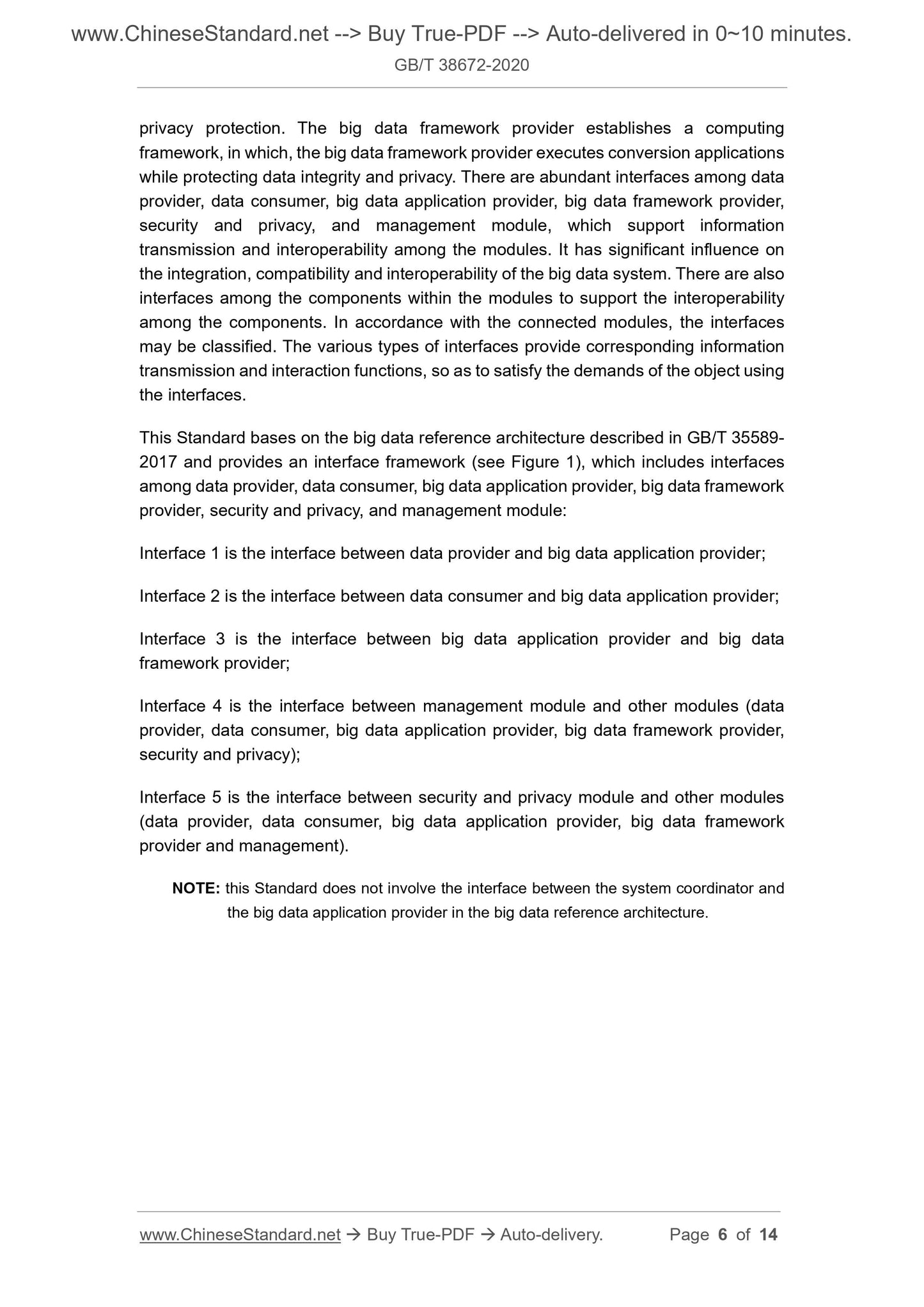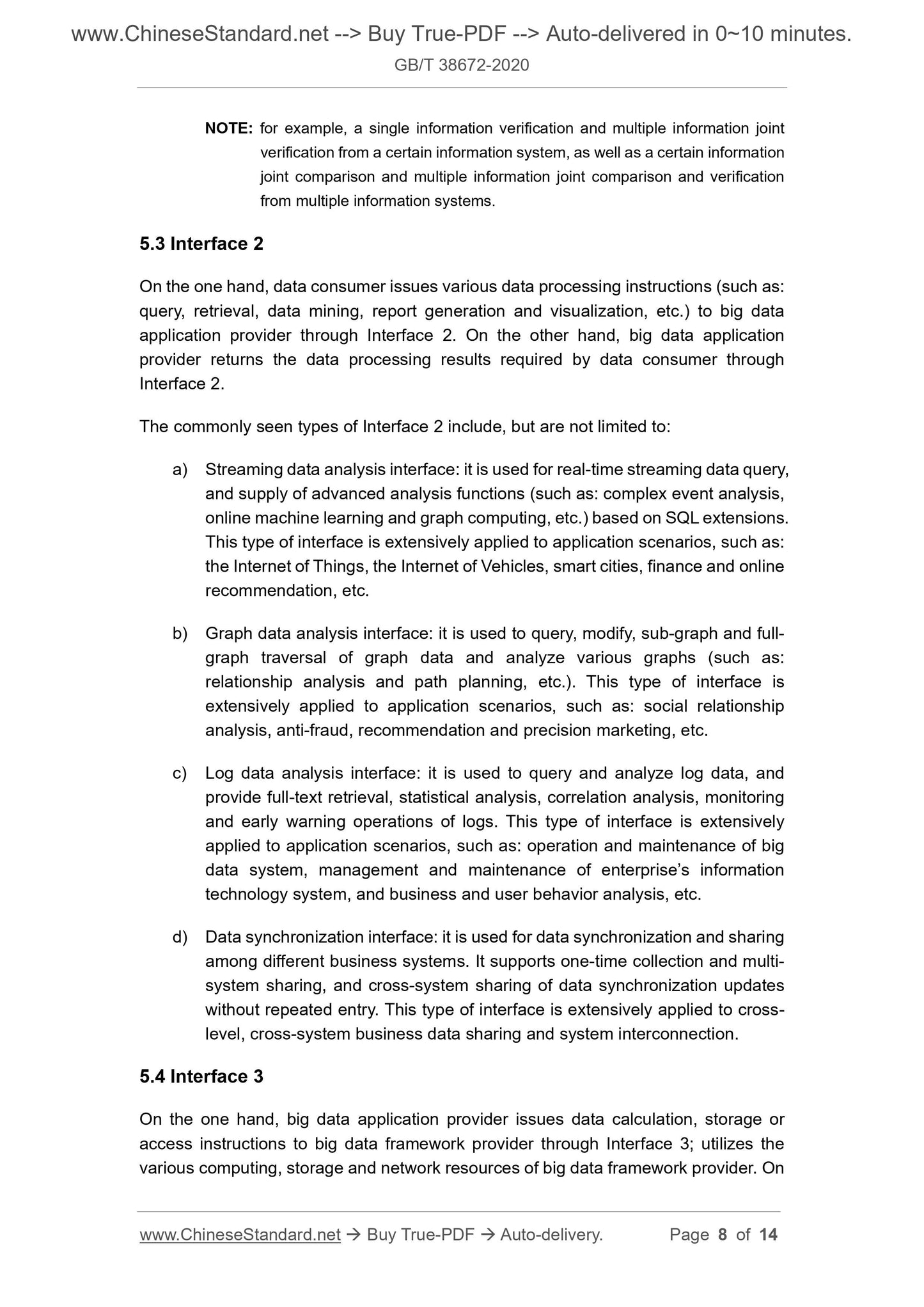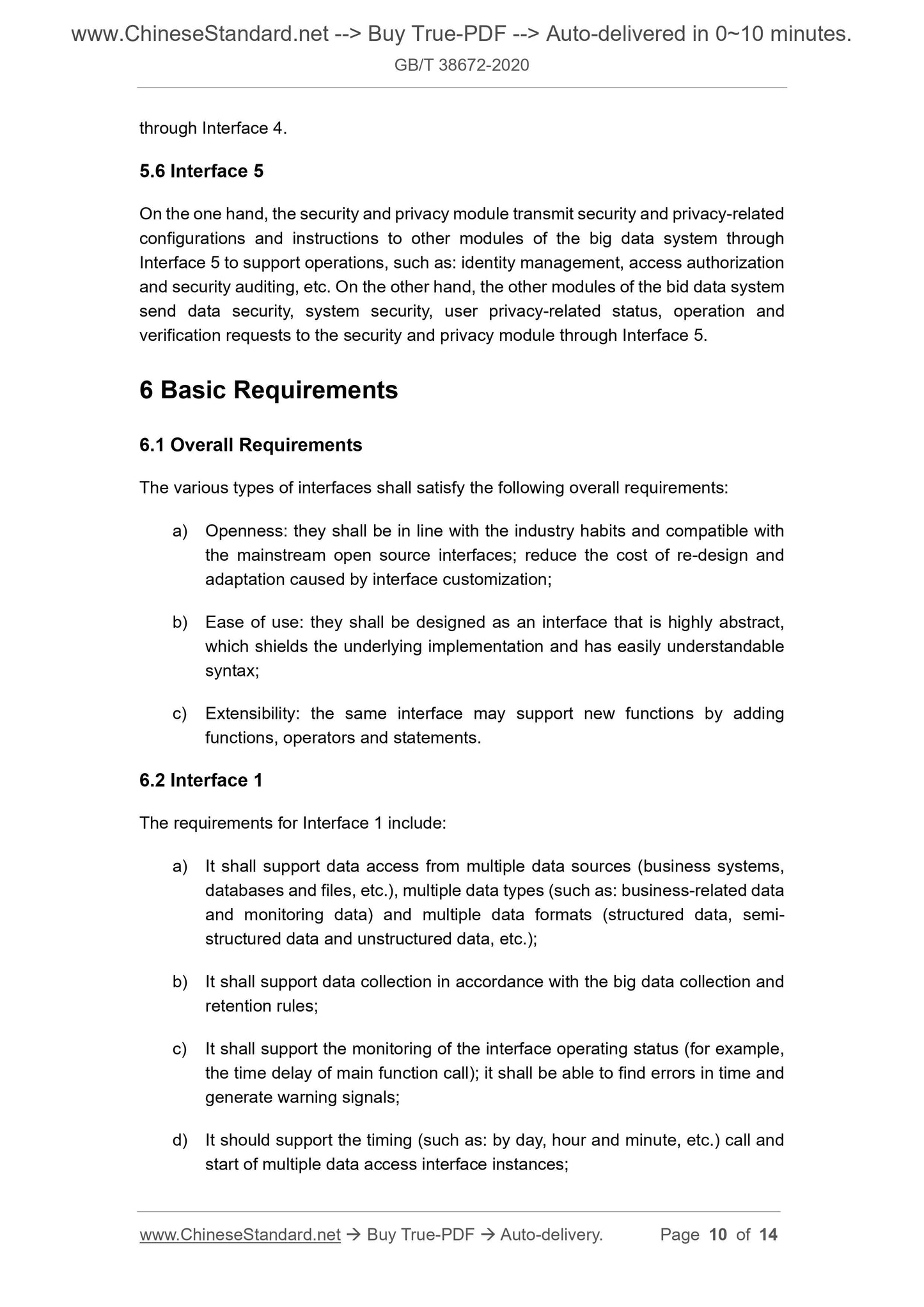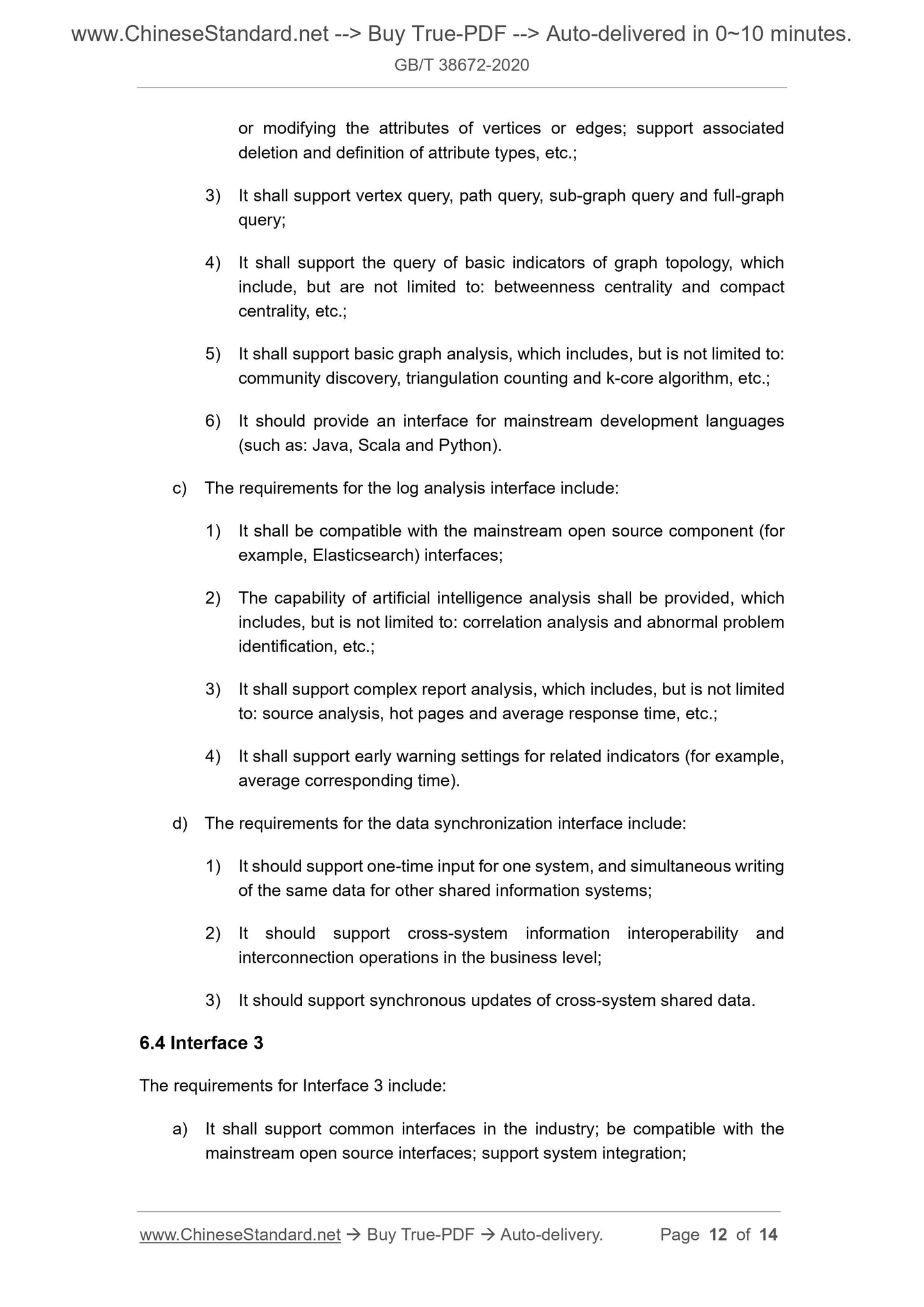1
/
of
7
www.ChineseStandard.us -- Field Test Asia Pte. Ltd.
GB/T 38672-2020 English PDF (GB/T38672-2020)
GB/T 38672-2020 English PDF (GB/T38672-2020)
Regular price
$165.00
Regular price
Sale price
$165.00
Unit price
/
per
Shipping calculated at checkout.
Couldn't load pickup availability
GB/T 38672-2020: Information Technology - Big Data - Interface Basic Requirements
Delivery: 9 seconds. Download (and Email) true-PDF + Invoice.Get Quotation: Click GB/T 38672-2020 (Self-service in 1-minute)
Newer / historical versions: GB/T 38672-2020
Preview True-PDF
Scope
This Standard provides an interface framework based on the big data referencearchitecture and specifies the basic requirements for the interface.
This Standard is applicable to the guidance of the design, development and application
deployment of the big data system.
Basic Data
| Standard ID | GB/T 38672-2020 (GB/T38672-2020) |
| Description (Translated English) | Information Technology - Big Data - Interface Basic Requirements |
| Sector / Industry | National Standard (Recommended) |
| Classification of Chinese Standard | L67 |
| Classification of International Standard | 35.240 |
| Word Count Estimation | 10,160 |
| Date of Issue | 2020-04-28 |
| Date of Implementation | 2020-11-01 |
| Quoted Standard | GB/T 35295-2017; GB/T 35589-2017 |
| Issuing agency(ies) | State Administration for Market Regulation, China National Standardization Administration |
| Summary | This standard specifies the interface framework based on the big data reference architecture, and specifies the basic requirements of the interface. This standard is applicable to guide the design, development and application deployment of big data systems. |
Share
